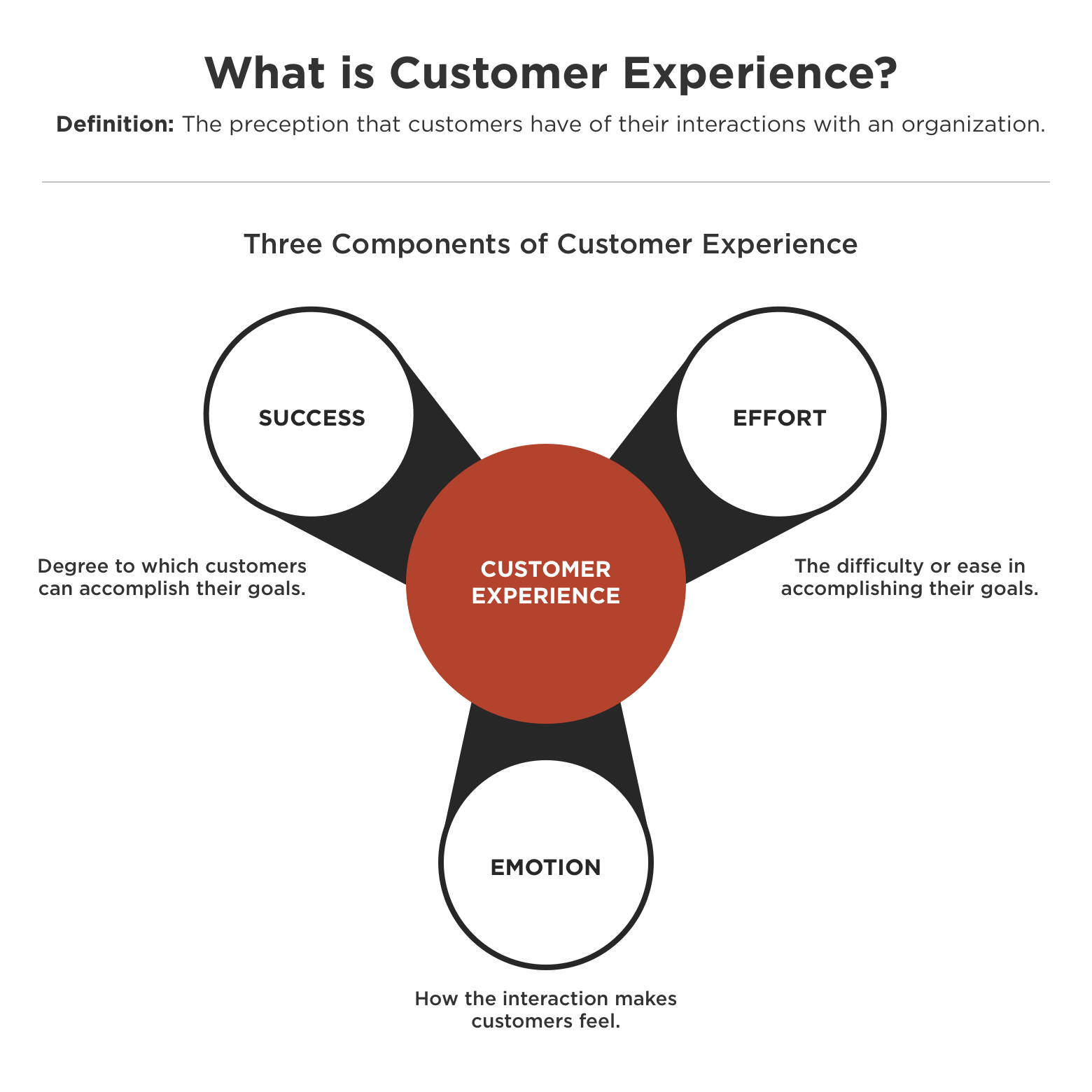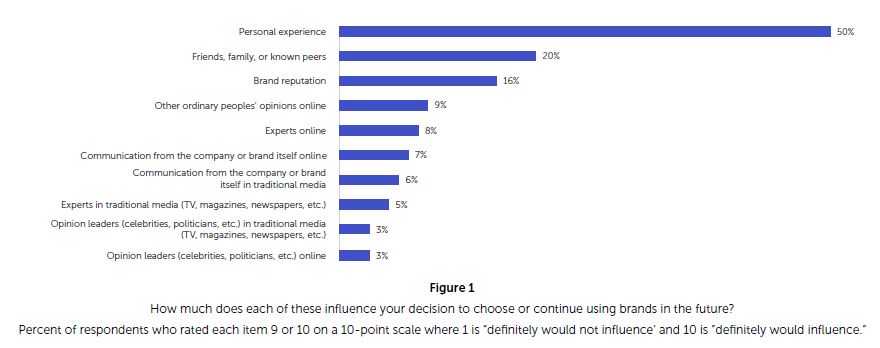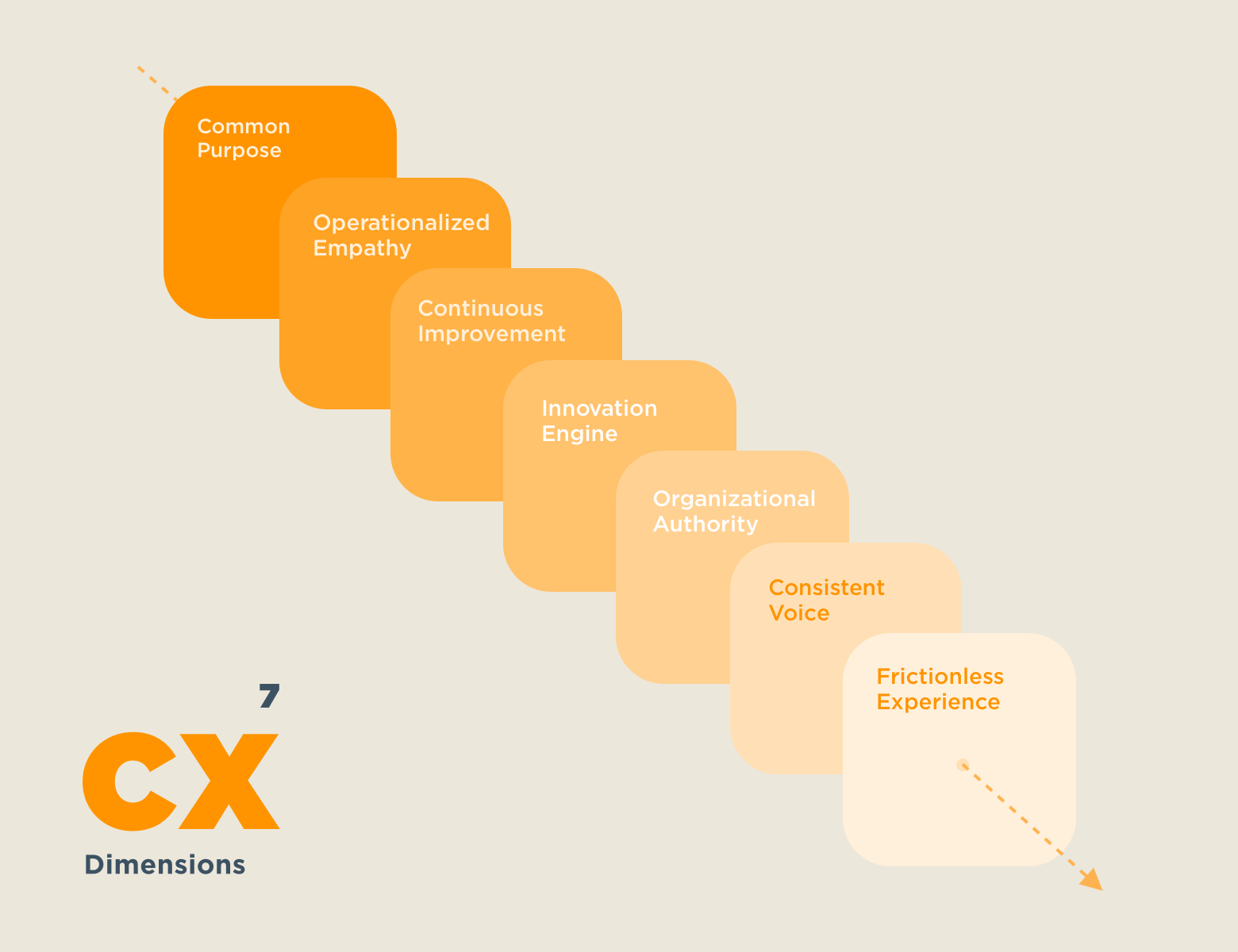What is Customer Experience, Really?

How do you know if your customers are happy? What impact does customer experience have on your bottom line? How can you create a strong, viable Voice of the Customer program?
This is Part 1 in our series of posts exploring why customer experience is important and how to build a more customer-centric culture within your organization.
What is Customer Experience, Really?
We all think we know what customer experience means, but how does it look when it’s broken down into its core elements?
We like to start with Temkin Group’s definition of customer experience (with our own small addition in bold):
“Customer Experience is the perception that customers have of their interactions with your organization (whether or not you agree with them).”
We’ve never met a client who believes they’re intentionally delivering a poor customer experience. The most self-aware businesses feel they’re doing their best but know they could be doing more. The least self-aware think they're doing just fine.
The truth is somewhere in the middle, and it's in the eye of your customers. It doesn't matter what you think - it matters what they think. And they probably think their experience is much worse than you do. According to a report from Bain, 80% of companies believe they deliver a “superior experience." But customers say only 8% of companies are actually delivering that experience.
So what is customer experience, really? Temkin breaks it down into three components: Success, Effort, and Emotion. Success is the degree to which customers can do what they want to do. Effort is how easy or hard they feel it is to do what they want to do. Emotion is how their interactions with your organization make them feel.

These three components work together to paint a complete picture of who you are and what you stand for as a business. That complete picture is what drives loyalty, and loyalty ultimately drives purchases and business growth.
Why Customer Experience Matters
According to a recent Ipsos + Medallia study of more than 8,000 consumers in the U.S., UK, France and Germany across six industry sectors, the top two factors that might influence consumers’ decision to choose or continue using a particular brand were personal experience (50%) and the opinions of friends, family or known peers (20%).
What’s more, 64% of global consumers claim to have avoided a brand because of a bad experience they had within the last year, and almost half (47%) say they’ve avoided a brand because of its online reputation or negative social reviews.
 Source: The Customer Experience Tipping Point — An Ipsos and Medallia Study
Source: The Customer Experience Tipping Point — An Ipsos and Medallia Study
Customer experience has a bigger impact on loyalty and purchasing behavior than brand reputation. How customers perceive their experiences with you affects how they perceive your brand, and their experience is a direct reflection of the internal operations and culture that you build across your organization.
The 7 Dimensions of Customer Experience
”Put your staff first, customers second, and shareholders third.” - Sir Richard Branson
Companies that consistently deliver excellent customer experiences typically have what we call the 7 Dimensions of Customer Experience Success:
Dimension 1: Common Purpose Employees and customers know why the company does what it does, why that matters beyond profits, and they’re motivated to be part of that purpose on a regular basis.
Dimension 2: Organizational Authority Employees are empowered by leadership to make decisions and find solutions that directly assist customers without the “let me get my manager” routine.
Dimension 3: Operationalized Empathy Employees regularly and intentionally empathize with customers, have access to research and data to help them understand customer needs, and find ways to create a personalized experience for each customer.
Dimension 4: Consistent Voice Employees and leadership speak with the same authentic and consistent voice across all channels to build trust with customers that the company means what it says.
Dimension 5: Continuous Improvements Employees are dedicated to improving their tools, products, processes, and personal behaviors to offer new value to customers through positive change.
Dimension 6: Frictionless Experience Employees take the time to craft seamless experiences across all touchpoints so customers can use the channel of their choice without a drop-off in experience.
Dimension 7: Innovation Engine Employees go beyond mimicking the competition or just observing customer behavior to trying new things, thinking outside the box, and regularly providing new value to customers.

What’s the first word in the description of each of those seven dimensions? Employees. That’s because great customer experience starts with great and empowered employees. Any cosmetic improvements built to fix customer experience on the outside will be short-lived if they don’t stand on the bedrock of a customer-first culture. There’s just no shortcut around it. In our next post, we’ll take a deeper look at how successful Voice of the Customer programs take these fundamental dimensions and turn them into actionable insights and real change.
Ready to Start Building Your Own Customer-Centric Culture?
We’ve helped organizations make radical changes simply by changing their orientation, rooting out bad habits, and focusing more on the needs of their customers and the employees who are ready and willing to give them a great experience.
Let’s talk about how you can start building a more customer-centric culture in your organization.
Or, get a jump start with our free 5-minute self-assessment to help you target which CX dimensions you need to focus on first.